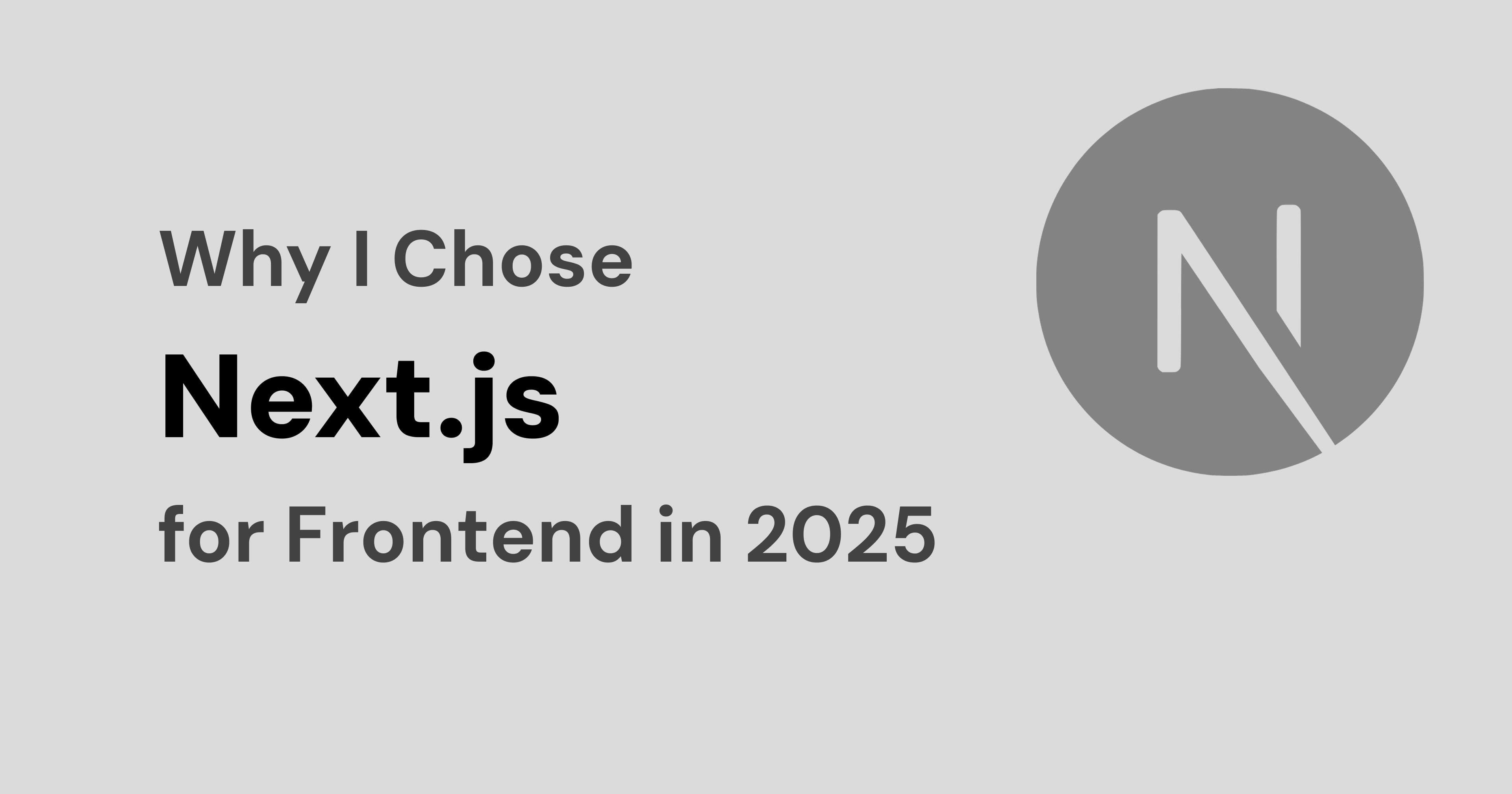Why I Chose Next.js for Frontend Development in 2025
Discover why I use Next.js in 2025 for building fast, SEO-optimized, and scalable frontend apps with React. See real use cases and key benefits.
Shafiq Hammad
Jun 28 2025

If you're searching for the best frontend framework for SEO, performance, and developer experience, look no further than Next.js.
As a frontend developer working with React, I’ve explored many frameworks—but Next.js consistently delivers the speed, flexibility, and SEO optimization modern web apps need. In this blog, I’ll explain why I chose Next.js for my projects, and why it’s still the top frontend tool in 2025.
🔍 What Is Next.js?
Next.js is a React-based frontend framework created by Vercel. It offers advanced features like:
- Server-side rendering (SSR)
- Static site generation (SSG)
- API routes
- Incremental Static Regeneration (ISR)
- Optimized performance and SEO
It’s designed for building fast, scalable, and SEO-friendly web applications without the complexity of traditional setups.
🚀 Top Reasons Why I Use Next.js
1. ✅ SEO Optimization Built-In
One of the biggest reasons I use Next.js is for SEO benefits. Unlike traditional single-page applications (SPAs), Next.js supports server-side rendering and static generation, which allows search engines to easily index your content.
You can control metadata, Open Graph tags, and structured data using:
- next/head in Pages Router
- metadata API in App Router
This means your blog posts, landing pages, and marketing sites are search engine optimized by default.
2. ⚡ Lightning-Fast Performance
Next.js includes performance optimization features out of the box:
- Automatic code splitting
- Image optimization with next/image
- Lazy loading and prefetching
- Edge rendering and CDN-level caching (via Vercel)
This leads to better Core Web Vitals, higher Lighthouse scores, and a snappier user experience.
3. 🧩 File-Based Routing & App Directory
With the introduction of the App Router, you now get:
- Layouts, loading UI, and server components
- Clean file-based routing (/app/blog/[slug]/page.tsx)
- Simpler nested navigation
No need for complex configuration—Next.js handles it elegantly.
4. 🧑💻 Full-Stack Development with API Routes
Next.js allows you to create backend endpoints using the same project, ideal for:
- Contact forms
- Authentication
- Webhooks
- Simple CRUD operations
Example:
tsCopyEdit// app/api/contact/route.ts export async function POST(req: Request) { const body = await req.json(); // process form data here }
This reduces the need for a separate backend server for many use cases.
5. 🎯 Optimized Developer Experience
Next.js offers:
- TypeScript and ESLint support out of the box
- Fast refresh and hot module replacement (HMR)
- Support for Tailwind CSS, MDX, Sanity, Prisma, and more
- Improved file structure and reusable layout components in the App Router
This makes the developer experience seamless and efficient—whether you’re working solo or in a team.
6. 🌍 Seamless Deployment with Vercel
Since Next.js is made by Vercel, deploying your project is incredibly simple. You get:
- Instant global CDN
- Preview environments for every Git branch
- Edge functions for low-latency APIs
- One-click deployment from GitHub
This means you can go from local development to production in seconds.
🛠️ Real Projects Where I Use Next.js
Here’s how I’ve used Next.js in my work:
- 🧑💼 Portfolio Website: shafiqhammad.site – Built with Next.js 15, Tailwind CSS, and Sanity CMS for content.
✅ Summary: Is Next.js Still Worth It in 2025?
Absolutely.
If you’re serious about building fast, SEO-optimized, and scalable web applications, Next.js is the framework to bet on. It combines the flexibility of React with production-ready features that save time, improve performance, and boost your site’s visibility on Google.
Whether you’re building a personal blog, portfolio, SaaS product, or eCommerce site—Next.js is a future-proof choice.
🔗 Helpful Next.js Resources:
- 📚 Official Docs: https://nextjs.org/docs
- 📦 Deploy with Vercel: https://vercel.com